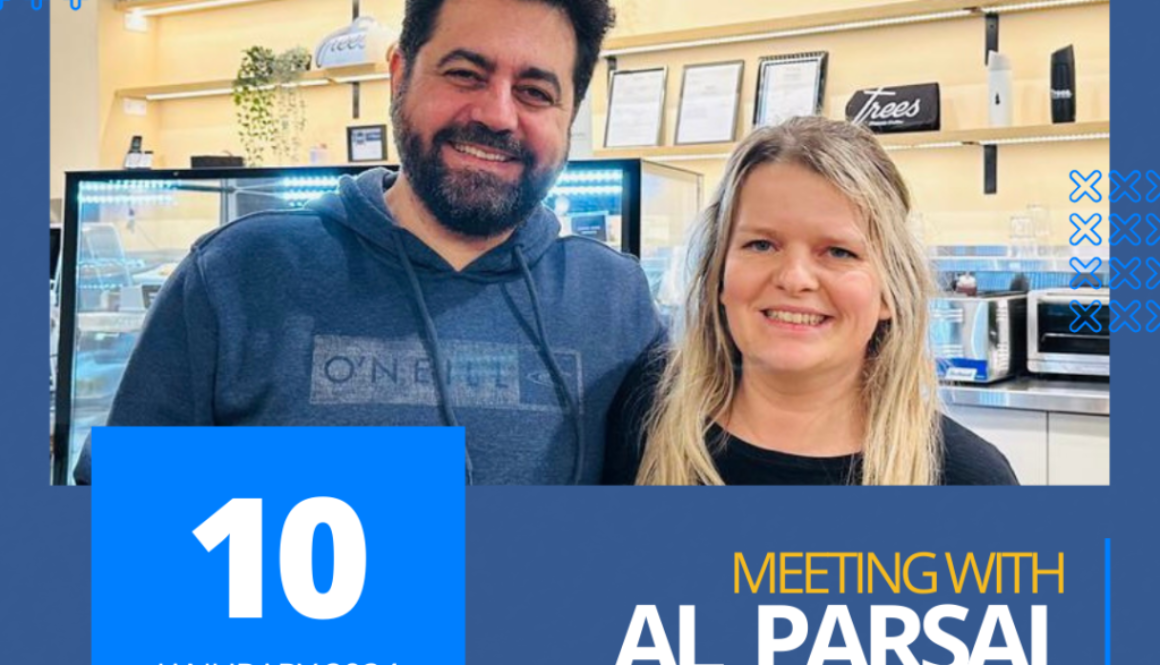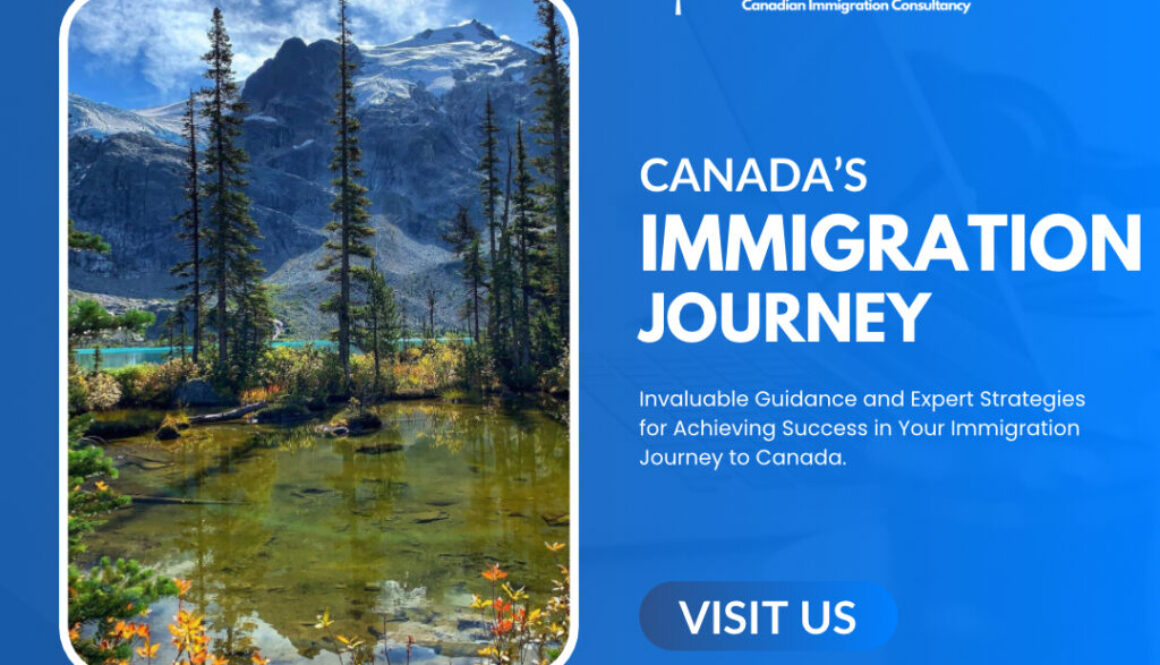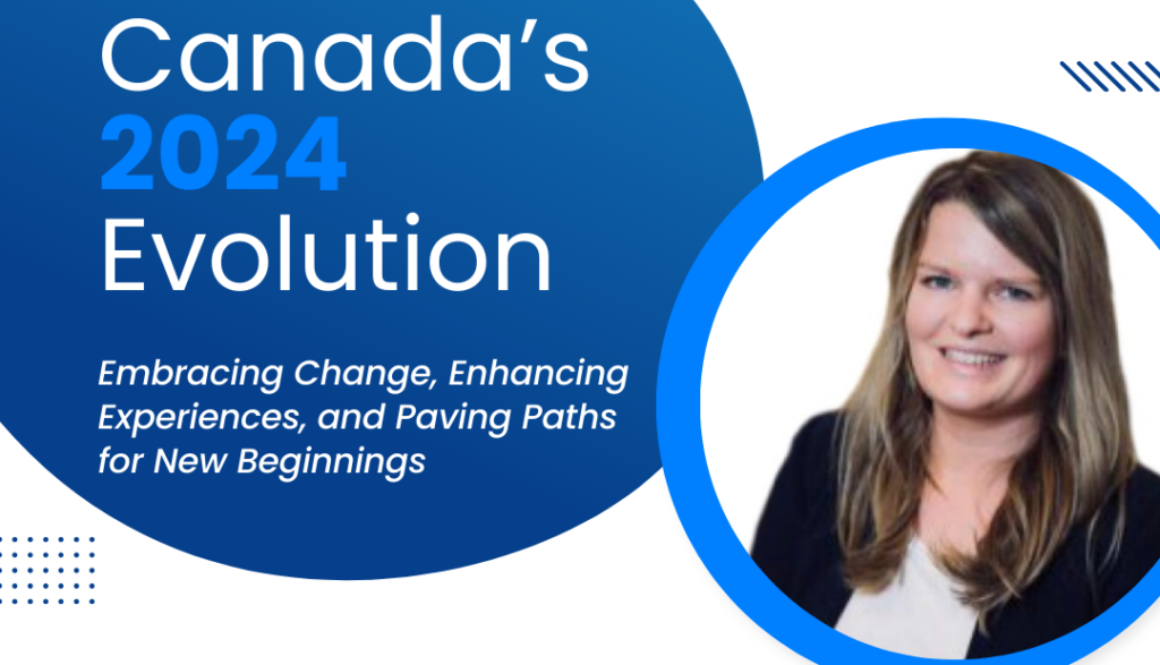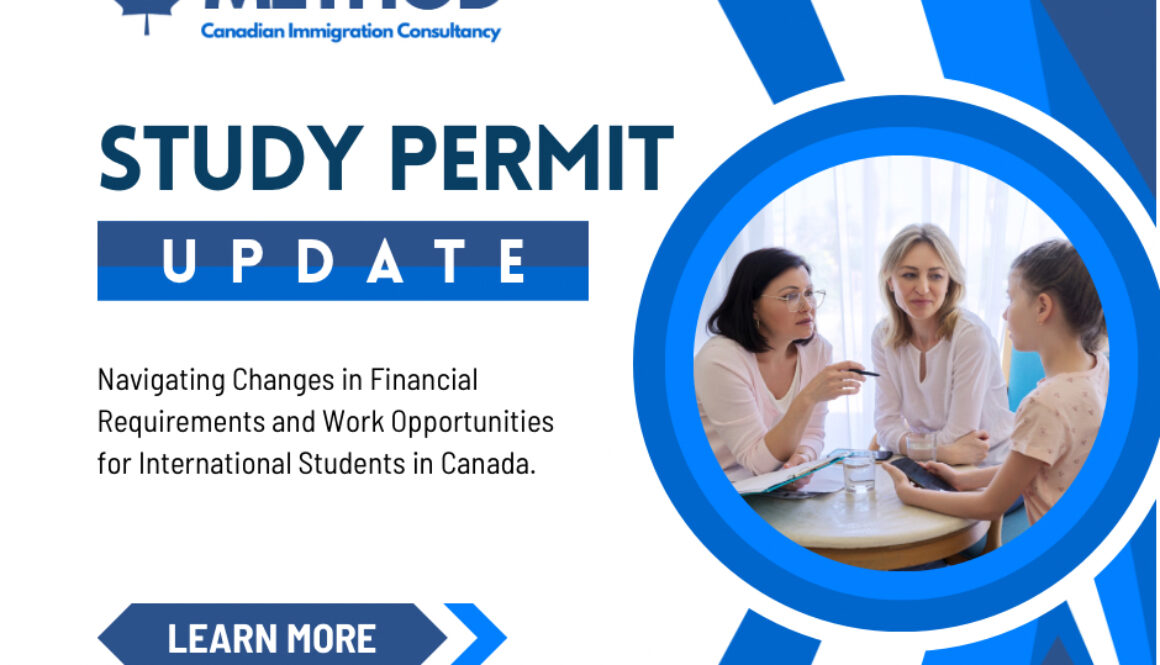Meeting Al Parsai
Meeting Al Parsai in Vancouver was great. He was my initial teacher during my immigration law training in Canada, and now we collaborate on complex immigration cases together!

Meeting Al Parsai in Vancouver was great. He was my initial teacher during my immigration law training in Canada, and now we collaborate on complex immigration cases together!

Embarking on the journey to immigrate to Canada is a significant step that requires careful planning and preparation. This blog post aims to provide essential tips to guide individuals through the immigration process, helping them make informed decisions and increase their chances of success.
Thorough Research: Begin by thoroughly researching the various immigration programs offered by Canada, including Express Entry, Provincial Nominee Programs (PNPs), and family sponsorship. Understanding these pathways will help you choose the one that best suits your situation.
Eligibility Check: Carefully review the eligibility criteria for the chosen immigration program to ensure you meet the requirements. This may include factors such as age, education, work experience, language proficiency, and adaptability.
Language Proficiency: Strengthen your chances by improving your English or French language skills. Taking language proficiency tests like IELTS or CELPIP and achieving high scores can significantly enhance your application.
Credential Assessment: Have your educational credentials assessed by designated organizations to ensure they align with Canadian standards. This step is crucial for programs that consider educational qualifications.
Express Entry Profile: If applicable, create a well-detailed Express Entry profile. Ensure that all information provided is accurate and up-to-date. Your profile will be ranked based on the Comprehensive Ranking System (CRS), so aim for a competitive score.
Networking and Job Opportunities: Actively seek job opportunities in Canada through networking and online platforms. A valid job offer from a Canadian employer can boost your chances of successful immigration.
Provincial Nominee Programs (PNPs): Explore the PNPs offered by different provinces. These programs allow provinces to nominate individuals based on their specific labor market needs. Research the specific requirements and processes for each province.
Comprehensive Ranking System (CRS) Enhancement: Understand how CRS points are awarded and work on improving your score if needed. Factors such as age, education, work experience, language proficiency, and adaptability contribute to your overall CRS score.
Professional Guidance: Consider seeking assistance from reputable immigration consultants or lawyers. Professionals in the field can provide valuable insights, ensuring your application adheres to current immigration policies.
Patience and Persistence: Immigration processes can be lengthy, and delays are not uncommon. Stay patient, stay informed about policy changes, and persist in your efforts to achieve your goal of moving to Canada.
Embarking on the immigration journey to Canada requires careful planning and adherence to specific guidelines. By following these essential tips, individuals can navigate the process more confidently and increase their chances of a successful immigration outcome. Remember, staying informed and seeking professional advice when needed can make the journey smoother and more rewarding.
#CanadaImmigration #GlobalCitizen #NewBeginnings

Immigration, Refugees, and Citizenship Canada (IRCC) is spearheading a series of transformative changes set to significantly impact newcomers to Canada in 2024. The cornerstone of these changes is the Immigration Levels Plan for 2024-2026, where Canada aspires to embrace a total of 485,000 permanent residents (PRs) in 2024. Alongside this ambitious immigration goal, Canada is poised to roll out comprehensive updates across various programs while harnessing the power of Artificial Intelligence (AI) to streamline and enhance the overall client experience.
A pivotal aspect of these changes is reflected in the updates to the Express Entry System. In 2023, IRCC commenced category-based Express Entry draws, strategically designed to identify foreign nationals best suited to address the nation’s most pressing labor gaps and demographic needs. The selection criteria included prioritizing individuals with French language proficiency and recent work experience in key industries such as Healthcare, STEM (Science, Engineering, Technology, and Mathematics), and Trades, Transport, and Agri-Food/Agriculture.
As we look ahead to 2024, IRCC is anticipated to persist with category-based draws. However, the department has underscored its commitment to reassess the focus categories chosen in 2023, potentially modifying them based on the evolving needs of Canada’s labor market. This implies that new sectors and proficiencies may emerge as focal points, expanding the eligibility for category-based Express Entry draws in the upcoming year.
In parallel, significant developments are occurring within the Provincial Nominee Program (PNP). As a vital immigration pathway that empowers local governments to hand-select candidates to address labor market gaps, PNPs are slated to become the country’s most prominent immigration pathway in 2024, according to the latest Immigration Levels Plan.
Provinces have received a new set of guiding principles for PNPs, and the introduction of multi-year plans from 2024 onwards is poised to enhance provincial and territorial immigration strategies, providing a more transparent allocation process.
Moreover, there’s promising news for applicants under the Parents and Grandparents Program (PGP). While Canada aimed to welcome 28,500 immigrants through the PGP in 2023, the Immigration Levels Plan for 2024 indicates an increase in PGP targets to 32,000. IRCC’s potential improvements in “intake management and the alignment of [application] inputs and outputs” may pave the way for more PGP applicants to find a new home in Canada in the coming year.
The International Student Program is undergoing significant enhancements to fortify its integrity and protect incoming foreign nationals. IRCC has launched a reformed Letter of Acceptance (LOA) verification system, requiring Designated Learning Institutions (DLIs) across Canada to confirm every applicant’s LOA directly with IRCC. This stringent yet necessary measure aims to shield prospective students from fraud, ensuring study permits are issued solely on genuine LOAs.
Furthermore, IRCC has announced a comprehensive review of the Post-Graduation Work Permit (PGWP) program. This program is vital for many international students intending to apply for permanent residency, as the Comprehensive Ranking System (CRS) score favors Canadian work experience. The anticipated reforms aim to better align the PGWP with the country’s labor market needs and regional and Francophone immigration goals.
Looking beyond 2024, IRCC is committed to implementing various changes to enhance the experience and life of Canadian newcomers navigating the immigration process. A pivotal initiative involves a heightened integration of AI and technology, aiming to reduce processing times, improve tools for IRCC officers, and align with Canada’s immigration and diversity priorities. This digital transformation seeks to enhance the client experience through improved service standards, strengthened partnerships with employers and institutions relying on immigration, and increased user-friendliness via digital and virtual technologies.
To ensure a more inclusive and informed approach to immigration policies, IRCC is set to establish a new advisory board. This unique board will include individuals with lived experience in immigration, providing a platform for newcomers to influence programs and processes affecting them directly. The board’s establishment is a strategic move to strengthen policy and program development, anchoring Canada’s immigration system in a human-centric approach.
Adding another layer to these changes is the introduction of the Chief International Talent Officer (CITO). This novel role is designed to enhance the alignment between Canada’s immigration system and its national labor market and sectoral strategies. The responsibilities vested in the CITO are expected to bring about substantial changes in Canada’s annual immigration landscape, emphasizing the importance of prospective immigrants staying attuned to developments once the role is appointed.
In conclusion, the evolving landscape of Canadian immigration in 2024 encompasses a multifaceted approach, touching upon various programs and pathways. From Express Entry System modifications to PNP advancements, increased PGP targets, and enhancements in the International Student Program, these changes aim to create a more robust, efficient, and inclusive immigration system for newcomers to Canada.
The commitment to leveraging AI and technology, establishing an advisory board, and introducing the Chief International Talent Officer signifies Canada’s dedication to staying at the forefront of global talent attraction while maintaining a human-centric perspective in its immigration policies. As the year unfolds, prospective immigrants to Canada are encouraged to stay informed about these dynamic changes that will shape their journey toward a new life in the Great White North.

Great news for our UK friends – the IEC pools are officially open! Whether you’re dreaming of maple syrup in Canada or exploring the diverse landscapes of Australia, now is the time to embark on your International Experience Canada (IEC) adventure.
Age Limit Extension for UK Applicants
The age limit for applying for an IEC visa has been extended for UK citizens, allowing individuals up to the age of 35 to seize this incredible opportunity. If you’ve been contemplating an overseas adventure, there’s no better time than now to make it a reality.
Second IEC Visa Opportunities
For those who have already experienced the wonders of an IEC adventure and are yearning for more, good news awaits! The Recognized Organizations (ROs) are now accepting applications for second IEC visas starting today. This opens up the possibility for continued exploration and new cultural experiences.
How We Can Assist You
Embarking on the IEC journey can be a thrilling yet complex process. If you’re considering applying for an IEC visa and would like expert assistance, look no further. Our dedicated team at Method Immigration is here to guide you through the process.
To get started or learn more about how we can assist you, feel free to reach out to us at admin@method-immigration.com. We’re here to make your IEC application seamless and ensure you’re well-prepared for the adventure of a lifetime.
Don’t miss out on this incredible opportunity to explore the world, gain valuable experiences, and create memories that will last a lifetime. The IEC pools are open – it’s time to dive in!

Navigating Changes in Financial Requirements and Work Opportunities for International Students in Canada
Effective January 1, 2024, a revision in the financial prerequisites for study permit applicants aims to better equip international students for their life experiences in Canada. This adjustment, subject to annual reviews mirroring other immigration initiatives, stipulates that, for the year 2024, a sole applicant must manifest financial capability amounting to $20,635. This sum is over and above their primary obligations of tuition and travel expenses, and the modification specifically applies to new study permit applications received on or after January 1, 2024.
Additionally, Minister Miller has issued an update on three temporary policies initially scheduled to conclude by the close of 2023:

Since the onset of the pandemic, the conventional rhythm of Express Entry draws has undergone shifts. Immigration, Refugees and Citizenship Canada (IRCC) no longer adheres to a predictable draw schedule.
With no draws held since October 26th, IRCC has not disclosed the reasons for this hiatus. Nonetheless, there are compelling reasons to contemplate entering the Express Entry pool.
Express Entry and Provincial Nominee Programs:
Participating in the Express Entry pool, if eligible, enhances your prospects of immigrating to Canada successfully. While in the pool, a province might express interest in your profile, leading to an invitation for a provincial nomination. This nomination virtually guarantees an Invitation to Apply (ITA) for Canadian permanent residence.
A provincial nomination is a key factor in Express Entry’s Comprehensive Ranking System (CRS), granting candidates an additional 600 points. The CRS assesses candidates based on factors such as age, education, work experience, and language proficiency.
Higher CRS scores increase the likelihood of receiving an ITA:
Nearly every province and territory operates its own Provincial Nominee Program (PNP), aligning with Express Entry. For instance, Ontario’s Immigration Nominee Program (OINP) seeks candidates in the Express Entry pool for its immigration streams.
Despite the pause in Express Entry draws, candidates can still receive provincial nominations, positioning them among the first to apply for permanent residence when draws resume.
Invitations to Apply for Candidates with Lower CRS Scores:
Express Entry draws may resume with various CRS score cut-offs. Recent draws have included candidates with lower CRS scores, especially in category-based selection draws for:
These categories diversify candidate selection, allowing for lower CRS scores compared to program-specific and general draws.
With Canada’s increasing immigration levels, candidates with lower CRS scores have more opportunities to be invited to apply for permanent residency.
Being in the Express Entry pool enables you to create a “Plus Account” in the Canadian government’s Job Bank. This provides access to job opportunities, potentially increasing your chances of securing a Canadian job offer.
A Canadian job offer can earn you extra CRS points, improving your chances of receiving an ITA and facilitating a smooth transition into Canada’s labor market.

Express Entry draws operated with a high degree of predictability before the onset of the COVID-19 pandemic. Occurring every two weeks on Wednesdays, these draws were characterized by consistent features, including over 3,000 Invitations to Apply (ITAs) for permanent residence and Comprehensive Ranking System (CRS) cut-offs typically around 470 points. This predictability was rooted in the system’s stability, marked by intact policy objectives and significant progress toward processing 80% of applications within a six-month timeframe.
However, the landscape of Express Entry draws underwent a significant shift in the wake of the pandemic. A once-reliable pattern dissipated, and no discernible recurrence emerged in terms of draw timing, types, ITA numbers, or CRS cut-offs. Notably, the year witnessed regular draws until June, after which the introduction of category-based selection prompted increased draw frequency. An unprecedented 12 draws took place between June 27 and August 15, a departure from the previous norm of 4-8 draws over a comparable period.
Several factors contributed to this shift in predictability. Firstly, the Immigration Levels Plan set by IRCC played a crucial role. The department annually outlines targets for permanent resident admissions, including specific figures for Express Entry candidates. The decision on whether to conduct further draws hinges on the constant evaluation of the number of permanent residence applications in the processing queue.
Policy objectives also played a pivotal role, guided by the Minister’s mandate to strengthen the national economy. The consideration of whether to conduct all-program draws, program-specific draws, or category-based invitations introduced an element of strategic decision-making. The pandemic prompted specific strategies, such as large draws for Canadian Experience Class (CEC) candidates, demonstrating the system’s adaptability to external challenges.
Moreover, occasional alterations to the Comprehensive Ranking System (CRS) and Express Entry profiles contributed to variations in draw frequency. Changes in CRS points allocation, such as the 2020 increase for French proficiency, necessitated technical updates to maintain the accuracy of profile scores.
The occurrence of IT issues, including glitches in the Express Entry profile builder, became an additional factor influencing draw schedules. Recent glitches led to extensions in submission timelines for affected candidates, highlighting the impact of technical challenges on the system.
Lastly, staffing changes within IRCC, driven by an ongoing reorganization following a report on departmental inefficiencies, added another layer of influence. Recommendations for restructuring are being implemented, impacting the personnel landscape within the department.
In conclusion, the predictability of Express Entry draws has undergone a transformation post-pandemic, shaped by a combination of factors ranging from immigration targets and policy objectives to technical challenges and organizational adjustments. This adaptability underscores the system’s responsiveness to dynamic external conditions and the multifaceted considerations that shape the frequency and nature of Express Entry draws.

Canada’s 2024-2026 Immigration Levels Plan reveals a focus on increasing French-speaking permanent residents (PRs), with targets set at 31,500 in 2025 and 36,000 in 2026. Notably, the overall admissions target remains stable at 500,000 new PRs for both years.
The plan indicates a growth in the ‘overall French-speaking Permanent Resident Admissions outside Quebec’ category by 4,500 in 2026. This aligns with Canada’s strategic goal, outlined in the recent report ‘An Immigration System for Canada’s Future,’ to enhance the vitality of Francophone communities, supporting settlement and integration efforts.
Despite the stability in overall admissions, the ‘Economic Pilots’ category is expected to see a decrease from 14,750 in 2025 to 13,750 in 2026. The move to boost French-speaking immigration reflects Canada’s commitment to increasing demographic weight in Francophone minority communities.
Initiatives, including the new Francophone Immigration Policy, promotion efforts, and support for settlement, aim to strengthen French-language immigration across the country.

Addressing Challenges in PR Application Processing: Auditor General’s Report and Recommendations
The Office of the Auditor General (OAG) has recently published its report regarding the processing of permanent residence applications by Immigration Refugees and Citizenship Canada (IRCC). This audit aimed to assess the efficiency and speed of PR application processing by IRCC.
The OAG plays a vital role in providing factual, unbiased information and expert guidance to Canada’s parliament. Parliament relies on these audits to gauge government performance and hold it accountable for public fund management.
The OAG report was initiated in response to the growing backlog of permanent, temporary, and citizenship applications during the pandemic, with more than 2 million individuals affected. This surge in applications led to significant processing delays across various categories.
The audit encompassed the processing of PR applications under different programs, such as Economic class (Federal Skilled Worker, Quebec Skilled Worker Program, Provincial Nominee Program), Family class (Sponsored spouse and Partner Program, Dependent Children program), and Humanitarian class (Government-Assisted Refugees program, Privately Sponsored Refugee program).
The report’s findings indicate that despite efforts to reduce backlogs during the pandemic, applicants for permanent residence in Canada still experienced lengthy waiting times, with refugee program applicants being the most affected.
Refugees faced particularly long waiting periods, with privately sponsored refugees waiting an average of 30 months for a decision, and overseas spouses or common-law partners waiting 15 months.
Additionally, the report highlights that IRCC assigned application workloads to regional offices without adequately assessing the office’s resources. Disparities in workload were evident, such as the workload in the Dar es Salaam (Tanzania) office being five times greater than the Rome (Italy) office, despite comparable staffing levels.
The report also noted differences in application backlog size and age based on applicants’ country of citizenship, with certain offices being consistently under-resourced for years.
Furthermore, the OAG criticized IRCC for not effectively monitoring the implementation of its automated eligibility-assessment tool, failing to assess its impact on processing times and address any disparities for applicants.
The report presents six key recommendations for improving processing times and backlog clearance:
In response, Immigration Minister Marc Miller welcomed the report, emphasizing that significant progress has been made in reducing the backlog and improving processing times.
IRCC aims to process 80% of applications within service standards, with the remaining 20% taking longer due to complexity. Express Entry applications should be processed within six months, while family-class sponsorships are expected to take a year.
As of August 31, there were 2,198,700 applications in inventory across all lines of business, with 45% of them in backlog. Economic class, Express Entry, and spousal applications showed varying levels of backlog.
The backlog primarily resulted from the impact of the COVID-19 pandemic, with office closures affecting processing. Despite this, IRCC continued to accept applications, leading to a significant backlog.
IRCC has since increased processing capacity through digitization, staff recruitment, and automation. The number of applications in inventory has gradually decreased, but it remains above 2 million.
The ambitious Immigration Levels Plan has contributed to the high volume of applications, as Canada aims to admit a significant number of permanent residents in the coming years. The new plan for 2024-2026 is expected to maintain or even increase these targets.

Are you looking to experience the beauty and adventure of Canada in 2024? The new International Experience Canada (IEC) Visas have been designed to be your gateway to thrilling Canadian adventures. This blog post will guide you through all the necessary information about the IEC Visas and how you can benefit from them.
What is an IEC Visa?
The International Experience Canada (IEC) Visa is a work permit that allows young people from around 30 countries to live and work in Canada for up to two years. This visa is part of the IEC program, which is designed to allow youth to gain valuable international work experience and travel Canada at the same time.
Why Choose an IEC Visa?
The IEC Visa off ers an incredible opportunity for young people to immerse themselves in the Canadian culture and gain international work experience. This visa also provides the fl exibility to work anywhere in Canada and in any job, giving you the chance to explore diff erent regions and industries.
Who is Eligible for an IEC Visa?
Eligibility for an IEC Visa depends on your country of citizenship, age, and whether you can aff ord the costs of your stay in Canada, including health insurance and return travel. You may also need to meet certain health and character requirements. For the exact eligibility criteria, it is recommended to visit the offi cial IEC page.
How to Apply for an IEC Visa?
Applying for an IEC Visa involves several steps, including creating an online IEC profi le, receiving an Invitation to Apply (ITA), and then submitting your application. The process can take several weeks or months, so it’s crucial to start your application as soon as possible.
New IEC Visas: Your Gateway to 2024 Canadian Adventures
Prepare for Your Canadian Adventure
Once you receive your IEC Visa, it’s time to prepare for your Canadian adventure. Whether you’re interested in exploring the stunning landscapes, experiencing the vibrant cities, or working in one of Canada’s thriving industries, the IEC Visa is your ticket to an unforgettable adventure.
If you have any questions or need any assistance with your IEC Visa application, don’t hesitate to reach out. You can contact Laura Dickeson at admin@method-immigration.com for more information.